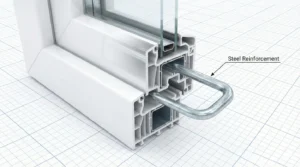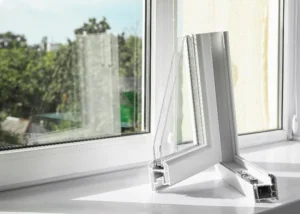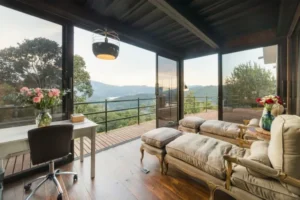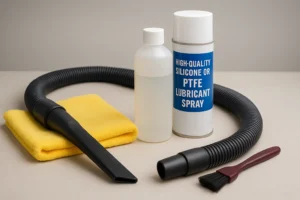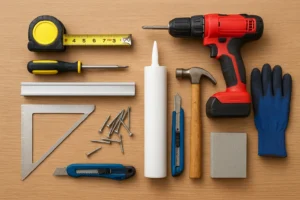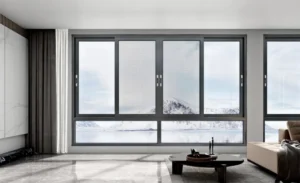Whether you’re building a new home or upgrading your existing windows, understanding the ins and outs of casement windows can help you make an informed choice that blends style, function, and energy efficiency. In this extensive guide, we’ll explore what a casement windows is, its history, various types and materials, benefits and drawbacks, installation tips, maintenance strategies, and design ideas to complement any architectural style.
1. What Is a Casement Window?
A casement window is a window unit hinged at the side, top, or bottom of its frame, allowing it to swing open much like a door. When hinged vertically at the side, it opens outward to the left or right; when hinged at the top, it’s referred to as an “awning window,” and when hinged at the bottom, a “hopper window.” Casement windows often use a crank or lever (also called a casement stay) to open and hold the sash securely in place.
“A casement window is a window that is attached to its frame by one or more hinges at the side. They are used singly or in pairs within a common frame, in which case they are hinged on the outside. Casement windows are often held open using a casement stay.”
This classic yet versatile design provides unobstructed views and excellent ventilation, making it a popular choice for kitchens, bathrooms, and living spaces alike.

2. A Brief History and Design Evolution
Casement windows trace their roots to medieval Europe, where iron casements were installed in castles and churches. Over centuries, the design evolved from heavy iron frames to lighter wooden and, later, vinyl and aluminum frames. During the Victorian era, ornate wooden casements with small panes became fashionable, while the mid-20th century saw the introduction of large, single‑pane designs for maximized views.
Today’s modern casement window designs combine sleek lines, advanced materials, and energy‑efficient glazing to deliver superior performance and aesthetics. Manufacturers now offer customization options such as tinted glass, integrated blinds, and dual‑locking mechanisms for added security.

3. Key Benefits of Casement Windows
3.1 Maximum Ventilation
Because they open fully outward, casement sashes catch breezes and funnel fresh air into your home more effectively than sliding or double‑hung windows. This “sail effect” is particularly valuable in kitchens and bathrooms where moisture and odors need to be expelled quickly.
3.2 Unobstructed Views
With no meeting rails or sashes dividing the glass, casement windows offer clean, panoramic views of the outdoors. View Window Size Guide .They’re ideal for picture windows and positioned above sinks or low walls.
3.3 Energy Efficiency
The compression seal created by the crank mechanism ensures a tight fit when closed, minimizing air infiltration. Understand energy-saving performance comparison.Many vinyl and fiberglass casements with multi‑pane insulated glass boast low U‑values and high R‑values.

4. Types of Casement Windows & Materials
4.1 Frame Materials
- Wood: Offers classic beauty and excellent insulation but requires regular maintenance (painting/staining).
- Vinyl: Low maintenance, cost‑effective, and energy‑efficient. Resistant to rot and insect damage.
- Aluminum: Strong and slim‑profiled, ideal for large spans; however, it conducts heat and cold unless thermally broken.
- Fiberglass: Durable, dimensionally stable, and similar look to wood; often more expensive.
4.2 Glazing Options
Choose from single‑, double‑, or triple‑pane glass, with options for Low‑E coatings, argon/krypton fills, and tinted or laminated safety glazing to suit your climate and privacy needs.

5. Installation Considerations
Proper installation is critical for performance and longevity. Key steps include:
- Rough Opening Prep: Ensure the opening is square, level, and plumb. Add waterproof flashing.
- Shimming & Leveling: Use non‑compressible shims to center the unit and maintain even gaps.
- Fastening: Secure through the frame per manufacturer specifications—typically three screws per side.
- Sealing: Apply high‑quality exterior caulk around the perimeter and install interior insulation (low‑expansion foam).
- Hardware Adjustment: Test the crank, hinges, and locks. Adjust tension as needed for smooth operation.
Refer to the replacement guide and installation techniques.Consider hiring a certified installer if you’re not experienced—improper fit can lead to air/water leaks and operational issues.

6. Maintenance & Cleaning Tips
To keep your casement window operating smoothly and looking its best:
- Lubricate hinges, cranks, and locking points annually with a silicone‑based spray.
- Clean glass with a mild, non‑abrasive cleaner and soft cloth to avoid scratching.
- Inspect and replace worn weatherstripping to maintain a tight seal.
- Touch up paint or stain on wood frames to prevent moisture intrusion.
- Remove and clean screens each season; store off‑season.

7. Energy Efficiency & Sustainability
Choosing the right casement can reduce heating and cooling costs significantly. Look for:
- Super window® Certification: Indicates tested and verified performance for your climate zone.
- Low‑E Coatings: Reflect infrared light, keeping heat out in summer and in during winter.
- Gas Fills: Argon or krypton gas between panes improves thermal insulation.
- Recyclable Materials: Many aluminum and vinyl frames are made from recycled content and are fully recyclable.
Well‑chosen casements contribute to LEED points and green building certifications.
8. Styling & Interior Design Ideas
Casement windows complement many architectural styles:
- Modern/Contemporary: Slim aluminum frames with large glass panels.
- Traditional/Colonial: Painted wood sashes with divided light grids.
- Cottage/Farmhouse: Rustic wood or composite frames, paired with plantation shutters.
- Industrial: Steel‑look frames with black finishes and minimal muntins.
Combine fixed picture windows with operable casements for a dramatic, functional wall of glass.

Conclusion
With their unparalleled ventilation, unobstructed views, and energy‑saving potential, casement windows remain one of the most versatile window types on the market. By selecting the right material, glazing, and professional installation, you’ll enjoy years of reliable performance and enhanced curb appeal.
Ready to upgrade? Learn more about our casement windows offerings and schedule a free estimate today!
Q&A: Frequently Asked Questions
What’s the difference between casement and awning windows?
An awning window is hinged at the top, opening outward from the bottom for rain‑protected ventilation, while a casement is side‑hinged.
Are casement windows secure?
Yes—modern casements feature multi‑point locking systems and compression seals that deter intruders and improve insulation.
How do I know if my home can accommodate large casement units?
Consult a structural engineer or professional installer to assess wall strength, header requirements, and local building codes.
Can I replace only one sash of my casement window?
Often yes—many manufacturers offer sash‑only replacement kits, but check frame condition and compatibility first.
For more other questions, visit our dedicated FAQ page: https://supwindow.com/casement-window-frequently-asked-questions/

